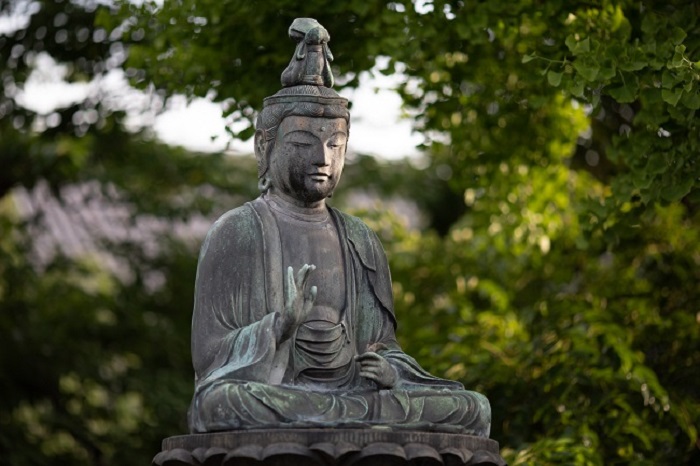In Buddhism, there is a parable called “The Second Arrow.” In this parable, the Buddha asks a student, “If a person is struck by an arrow, is it painful?” The student responds, “Yes, it is.” The Buddha then asks the student, “If the person is struck by a second arrow, is that even more painful?” The student again answers, “Yes, it is.”
In the parable, the Buddha then explains that in life, we can’t always control the first arrow. However, the second arrow is our reaction to the first. And with that second arrow comes the ability to choose our response.
We cannot avoid the first arrow. Some problems in life are simply unavoidable. For example, at some point, each of us will have to deal with a major problem like an illness, the death of a loved one, rejection or failure. The question isn’t if we will deal with these kinds of issues but when. In addition, on a daily basis, we have to deal with the minor aggravations that are just part of living in society – traffic, rude people, unexpected bills, etc.
These major and minor problems are the first arrow. And yes, they are painful. But we can choose how we respond to them. And the response we choose can either bring us pain or not. So, it is our choice as to whether we are hit by the second arrow or not.
Putting the Parable of the Second Arrow into Practice
Let me give you an example. Recently, I received some angry emails from a family member. This person tends to be dramatic, so I wasn’t surprised by the emails. Nevertheless, they weren’t pleasant to receive. That was my first arrow.
After receiving the emails, I had a choice. Do I get hit by a second arrow? Should I respond to these emails by trying to to defend myself? Or perhaps I should argue and try to make this person see my point of view? Frankly, all of that would have been as productive as slamming my head against a wall. And it would have disrupted my otherwise peaceful day.
Or do I avoid the second arrow? Do I just ignore the emails and avoid saying something that I would later regret? Well, with age comes wisdom, and in this instance, I avoided the second arrow. I didn’t respond. As a result, I stopped myself from saying something regrettable. And more importantly, I avoided going down a path of conflict that I was never interested in taking.
What I’ve learned over the years is that avoiding the second arrow is not easy. It takes maturity and wisdom. Unfortunately, some people spend their entire lives being hit by second arrows. Don’t let that be you.
To avoid the second arrow, consider following the three simple steps below.
Step One in Avoiding the Second Arrow – Pause
Most of us have said things in the heat of the moment that we wish we could un-say. Most of us have, at one time or another, sent an email or text message that we wish we could take back. And all those regrettable communications take place because we didn’t pause. We just reacted to a situation without giving it time or thought.
There are very few situations in life which require an immediate response. Those that do include being physically attacked or being on the verge of a car accident. However, most of the time, we have the luxury of pausing before responding to a situation.
By pausing, we can avoid the second arrow. Pausing gives us time to respond to upsetting situations with wisdom. When we pause, we can take the time to consider the other person’s point of view. And then we can propose a positive solution, instead of merely creating conflict.
Step Two – Detach
When we react poorly to any problem, it is because we are taking the situation personally. Avoiding the second arrow requires detachment. It requires us to view the situation rationally, as an outsider.
I will admit that I am not very good at being detached. So, when facing an issue which feels very personal, I always seek out the advice of a wise friend of mine. He is a professor, and he enjoys playing the devil’s advocate. He likes pointing out the other way of looking at a situation. For the last 20 years, I’ve sought his counsel on both big and small problems. His perspective has provided me with a “detached” way of looking at things.
The key is to look at your problem as if it doesn’t involve you. If your friend came to you with this same problem, what would you advise? When you take that approach, you can get closer to an answer that shows compassion for all. And when you act with compassion, you always dodge that second arrow.
Step Three – Behave the Same in Private as in Public
Avoiding the second arrow means that our response to the first arrow should be one that we are proud of. I always say that the litmus test of whether you are acting properly is this: Would I say this or do this in public? If my friends or family found out that I said or did this, would I feel ashamed or embarrassed?
During my life, I’ve known people who were very good at putting on a great public face. But behind closed doors, their behavior was deplorable. And they lived in fear of being exposed. If you want to avoid that second arrow, consider if you would be happy if your private behavior was made public.
For example, texts and emails are not private. They can be shared with anyone. So, if you send a text or email to someone, make sure that your communication is one that you would be willing to share with a lot of people. Because I guarantee you that if your text or email is rude or aggressive, it will be shared with others.
Of course, none of us is perfect. We all say and do things that are regrettable. But we should strive to be as proud of our private actions as we are of our public actions. When we operate in ways that we can be proud of, in ways that reflect our values, then we avoid that second arrow.
One of the greatest challenges that we face in life is avoiding that second arrow. Do what you can to always respond to every situation with wisdom and compassion. Choose the response that allows you to avoid that second arrow and prevent needless suffering in your life. (To read more about achieving happiness through a peaceful attitude, click here.)








